Group 14621, part 3: La Avenida & El Camino
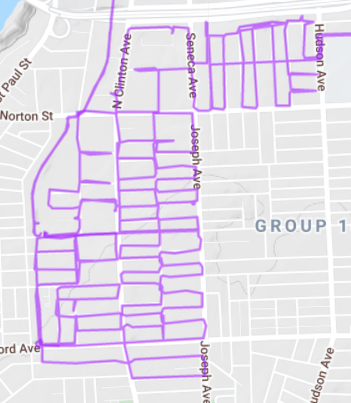
Year Incorporated: 1874 (south of Norton), 1914, 1923
Ward: 5/8/17
Population: 32,728 overall
Distance traveled: 23.43 miles[/su_box]
On the western end of Carthage is what’s now known as La Avenida, a predominantly Puerto Rican neighborhood with a long history of being home to many immigrant groups. Since Rochester’s early days, this section of the city would be home to several immigrant groups, including the Irish, Canadians, Germans, Jews, Italians and eventually the Puerto Rican and other Caribbean cultures. Over the years these different cultures would overlap, offering both diversity and tension as each group would blend. Whether in spite of or due to these cultural clashes the North Clinton corridor became the backbone of the growth of Rochester.
For the purpose of confining this article, I’m identifying the neighborhood as bounded by the El Camino trail in the west, Route 104 in the north, Joseph Ave to the east and a couple blocks south of Clifford Ave with La Marketa acting as anchor. Just for fun I’m tacking on the residential area between Seneca, Route 104, Hudson and Norton because otherwise it might be overlooked.
Butterhole
The most dominant immigrant group here through the beginning of the 20th century were the Germans, and they loved their dairy products. Thus was borne the Butterhole name, defining the area bounded by Clifford, Ridge Road, St. Paul and Clinton. In reality Butterhole was more of a melting pot; the Germans were but one of several ethnic and national identities to dominate the area.
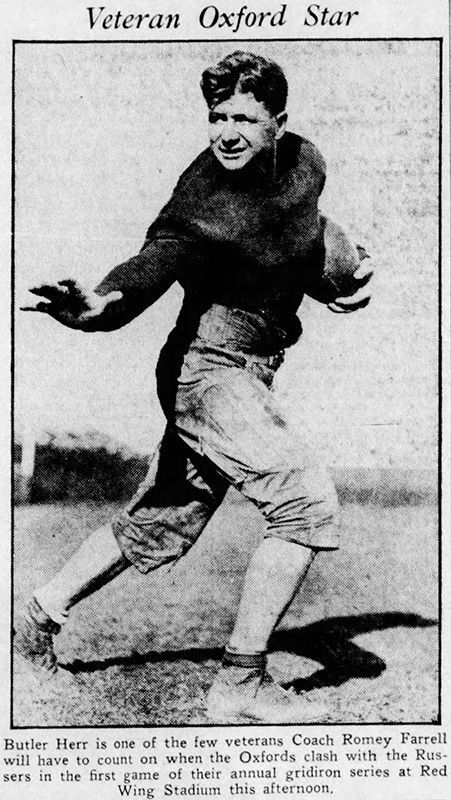
October 15, 1933. Pg 31
The neighborhood had a reputation for dairy and beer and bakeries and all the wonderful German imports, for sure, but it embraced it’s identity the most with sports. Semi-pro teams like the Butterhole Oxfords football team, which had a long-standing feud with the nearby Dutchtown Russers, consistently captured the headlines of the sports pages from the ’30s through the ’50s. The Tartars followed. There were the Little League All-Stars. The Butterhole Reds were the baseball team in the ’50s and ’60s. Then the Butterhole Orioles. There was even a bowling team, the Butterhole Genesees. I’d say 99 out of 100 searches for “Butterhole” in the headlines from 1920-1960 yielded sports stories.
The Butterhole Improvement Association, most active in the ’60s, kept an eye on the riff raff causing trouble in the local taverns. Of note was the Double E Restaurant at 1091 North Clinton Ave, which was cited for frequent fights and disturbing the local residents. When not going after rowdy bar patrons they’d tackle neighborhood beautification projects, having streets paved, adding lights and flower boxes.
There was no shortage of other activities. The Empress Theater at Clinton and Radio Street showed all the latest films, while leaving time for special features in Russian, Polish and German. The Cameo Theater at North Clinton near Bismark also emerged in the era of silent film, later featuring talkies and even Vaudeville before closing in 1957. There was the Avenue D Rec Center, which offered swimming, youth dances every weekend, and a softball field of their own. As Butterhole encompassed an area beyond the El Camino Trail, I’ll mention a few more neighborhood hangouts in my write-up of Carthage.
Hickey-Freeman and “The Temple”

Out of all the industries to fuel the local economy, none stands out quite like Hickey Freeman. Founded in 1899 as Hickey, Freeman, & Mahon Co., it quickly earned a reputation as a high-quality tailor of mens and boys suits. The business started out in a small factory at 84 St. Paul Street and within 9 years had expanded up the road to 240-248 St. Paul Street. Business continued to grow at an exponential rate and by 1912 the company had constructed their own headquarters at Clinton and Avenue D. The new building was massive at over 33,000 square feet. Using 50 tons of steel, one million bricks, and 27,000 feet of glass, it was dedicated as a “temple to fine tailoring”. In 1922 the footprint was expanded along the Avenue D side by nearly 70%, and again by an additional 60,000 sq. feet in 1929. The onset of the Great Depression seemed to have little effect on the company, as their president Jeremiah Hickey was publicly quoted as saying “the recent economic conditions were working to the advantage of the company”. Later it was revealed that the company did not completely avoid the effects of the economic downturn, with one employee quoting Hickey at a sales meeting: “I don’t care whether or not we make a profit, sell the product so we can keep the whole force busy.”

Over the following decades Hickey-Freeman continued to churn out its product for an international market, albeit under different ownership. In 2020 the company made the headlines yet again for helping to battle the Covid-19 pandemic, manufacturing masks and other protective gear for front-line health workers.
La Avenida and The Barrio
In the 1950s when the demographics of the neighborhood were already very mixed, a new group began to arrive. The island territory of Puerto Rico had been struggling with the hacienda system since its takeover by the US after the Spanish-American war, which allowed a booming population to become cheap labor for stateside land owners. After World War II the island, under the leadership of its first democratically-elected Governor Luis Muñoz Marín, experienced some drastic economic changes which resulted in a mass migration to the mainland. Thousands of Puerto Rican residents flowed northward to cities like New York, Rochester and Philadelphia. Our original settlers arrived in Wayne County in the 1940s as farm workers but moved to Rochester when the farm work ended. In the ’50s Rochester was the second most popular destination city for Puerto Ricans behind New York City. As of the 2010 census we are #1 in percent of total Puerto Rican population compared to total city population (13.2%).
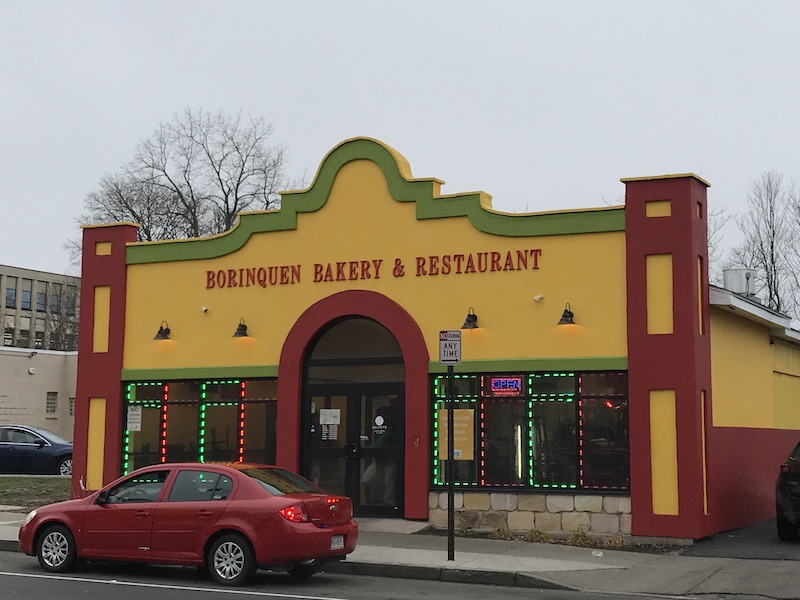
It was the barrio which drew so many of these immigrants to the old Butterhole area, and from there the community exploded. Community services began popping up, like the Ibero-American Action League or the Spanish Action Coalition. With the boom in population came a similar explosion of tensions between the different groups. “Gangs” were formed around mutual protection. The Puerto Rican “Chicos” often butted heads with the Italian “Skinnys”, and the YMCA stepped in with Operation Outreach to help calm the tensions between groups. Despite the efforts of these groups something became painfully obvious over time: the northeast quadrant was for the immigrants, and the city would rather pour resources into the areas that generated more tax revenue. The barrio had to look out for itself, but the people had support.
St. Michael’s and Our Lady of Perpetual Help
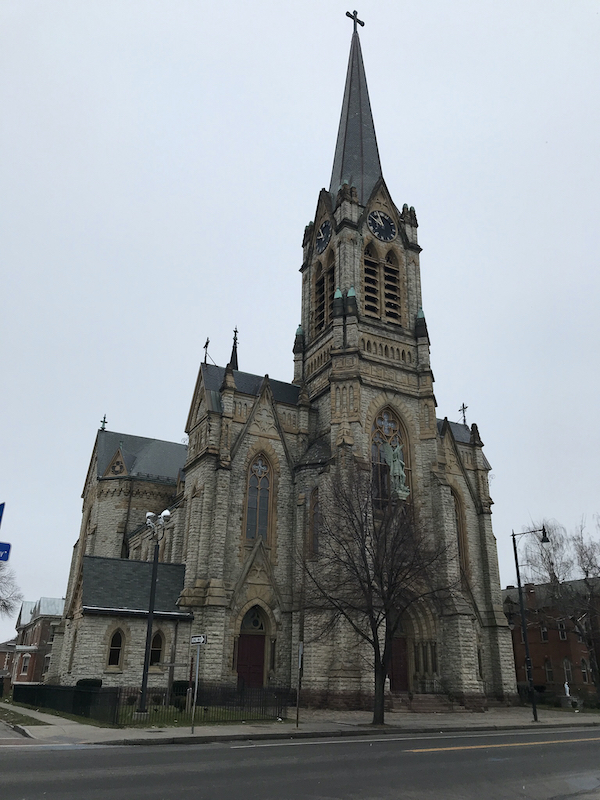
Aside from community and local organizations, area churches were the backbone of community progress, and Saint Michael’s was the largest and most active of the churches. The parish was first organized in 1872 and would construct its first church structure two years later. The church and rectory we see today was built between 1887 and 1890, it would be the largest religious building in the city with a footprint of 177ft x 92ft x 225ft. The largely-German congregation wanted to make their presence known and modeled it after the gothic Cologne Cathedral in Germany, to the chagrin of Bishop McQuaid who had hoped for a less-showy edifice. Parishioners re-mortgaged their homes to help foot the bill. Boat after boat of limestone and brownstone were floated down the Erie canal and hauled to the site. The church was to have 13 bells, the most of any Rochester church. Besides their German-born architect, they hired an Austrian to design the 15 massive stained glass windows depicting Biblical scenes. Once installed the pipe organ featured 2100 pipes. A new school was added to the lot in 1898, and a chapel for the Sisters of Notre Dame four years later. The Germans had indeed made a statement.

The church continued to hold mass in German and English for decades, and as the demographics of the neighborhood shifted the church adapted. The first Spanish Mass was held in 1967, helping to draw in a more diverse congregation. Yet lean times were ahead. A 1983 Democrat and Chronicle article quoted a longtime church volunteer: “If it wasn’t for bingo, I don’t know what the church would do.” The changes taking place in the neighborhood around them were mirrored within the church. In late 2020 rumors began to circulate that the Diocese of Rochester would need to close St. Michael’s Church, which prompted the formation of the Saint Michael Society. The society has retained a lawyer who specializes in keeping churches open, and has come up with a plan to offer more robust community services within the church. This is likely the beginning of a long fight for the society, and I’ll update this article if and when circumstances change for St. Michael’s.
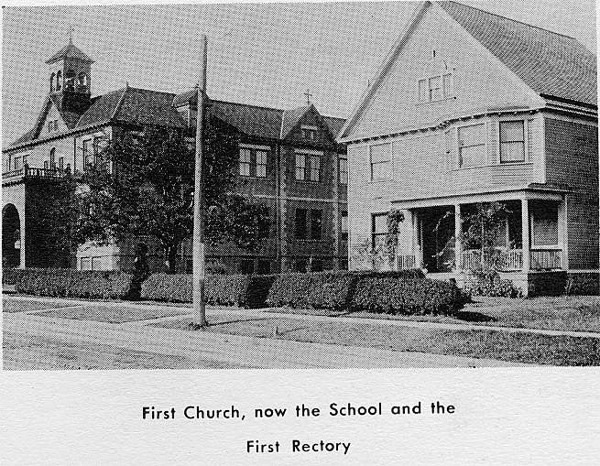
[image from dorchurches.com]
Our Lady of Perpetual Help was yet another addition to the Diocese of Rochester. After the parish was formed in 1904 a lot was purchased on Joseph Ave and a church building was constructed, measuring 52 feet x 110 feet. As the church grew this would become a school. The church pictured at the top of this article is the building that would ultimately serve the parish. Built in 1926, and designed by Joseph Oberlies and George Lorenz, it was described as an Italian Renaissance-style building made from cream-color brick, cast stone and terra cotta, punctuated by a copper-domed tower 110 feet in height, and containing four bells. The dedication took place in late May with great fanfare.
As with many Catholic churches in the city, the Rochester Diocese has had to make some difficult decisions. The cost of maintaining the property and holding regular service was too great and so the early 21st century saw much of its operations merge with St. Michael’s. The parish was merged into Saint Frances Xavier Cabrini, and the church held its last mass on January 9, 2011.
La Marketa at The International Plaza
Located near the southeast corner of Clifford and Clinton, La Marketa was supposed to be much more than it is today. The city recognized the need for a public gathering spot for the Puerto Rican community early on, but as plans evolved the ultimate concept became smaller and more compact. Once envisioned as a 2-story shopping mall with a Latin/Caribbean flavor it now resembles a handful of Public Market food stands arranged in a circle. Under the pall of the Covid-19 pandemic a ribbon cutting ceremony was held on October 8, 2020 recognizing 3 decades of planning and effort. It remains to be seen if the space will attract the desired foot traffic during non-pandemic times.
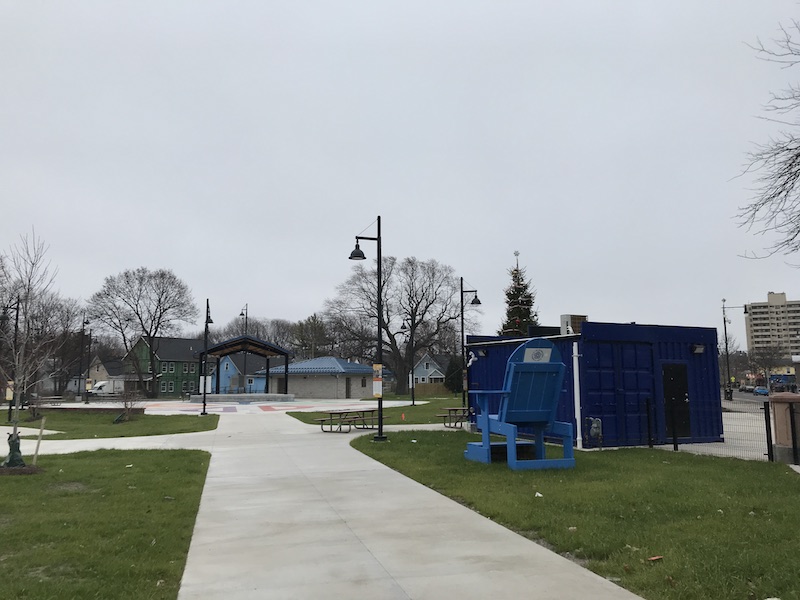
El Camino Trail
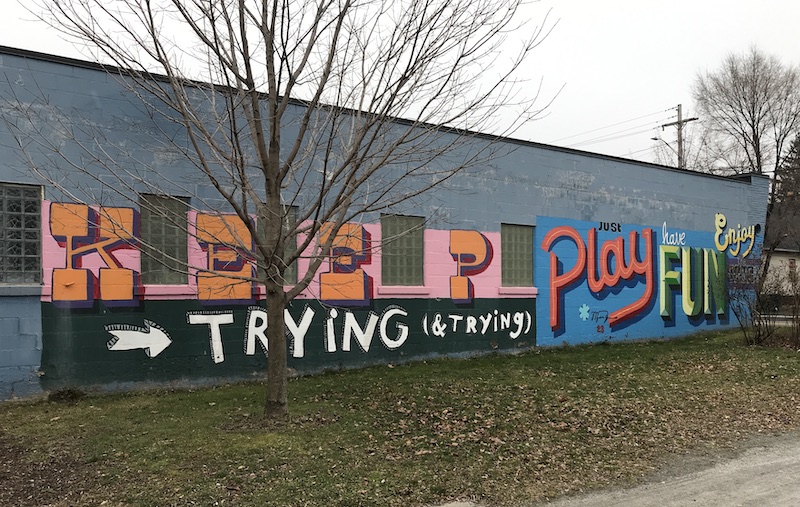
A narrow and often overlooked trestle spans the Genesee River, which once connected the industry of this neighborhood to High Falls and the Hojack Swing Bridge in Charlotte. The Rome Watertown & Ogdensburg railroad (later New York Central and successors) made stops at Adler Clothing Co., Michelsen Furniture Co (later the Avenue D Rec Center), Whitmore Rauber & Vicinus (bricks and paving), Addison Lithographing, and so many others.
Years passed and coal was no longer needed at the shuttered BeeBee power plant. Businesses along the line closed their loading docks for good, and the Hojack bridge ceased to operate. In the mid-’80s the “rails to trails” movement endeavored to convert old, unused railroad rights of way to recreation trails. The Genesee Land Trust, under the direction of former County Executive Thomas Frey, realized the old rail line was a perfect candidate, and a ribbon cutting ceremony was held in 2012.
The trail has multiple names. The “Thomas R. Frey Butterhole Trail at El Camino” honors the man who saw the project to completion, as well as the historic identity of the area and the multilingual nature of the neighborhood today. In my opinion the trail, as well as the rest of the neighborhood, deserves the Neighborhood of the Arts moniker as much as the place a few miles south of here. Soon after the trail opened the Wall\Therapy project matched international artists with empty walls adjacent to the path. The art of El Camino, combined with other nearby murals, make this section of the city one of the most colorful in the area.
Silver Stadium
The history of professional baseball in Rochester is far too long of a story to tell here, but it began in 1899 with the Rochester Bronchos. In the 1920s Major League teams across the country were affiliating with Triple-A (then Double-A) teams, and the St. Louis Cardinals took Rochester under their wing in 1929. With the affiliation came the name change, new team colors to match the Cardinals, and an upgrade to the ballfield. The current location at Bay Street was deemed inadequate by the new management and the hunt was on for a new ball field. The plot known as the Norton Street Circus grounds was selected and Red Wing Stadium was built.
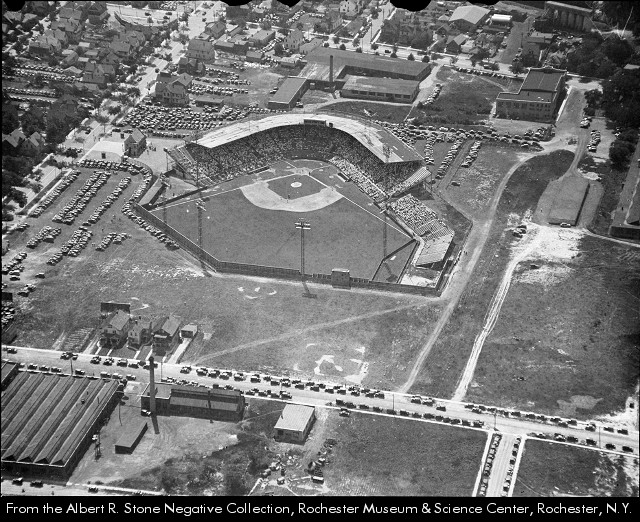
Red Wing Stadium went on to host some noteworthy events. Babe Ruth made multiple appearances throughout the 1930s and early ’40s. In the early years it served double duty as a football field for the above-mentioned Oxfords vs. Russers games. Boxing, Religious events, and concerts would later be featured here. Van Halen played to almost 20,000 fans on Labor Day of ’86. Nearly ten thousand more would show up for the Grateful Dead and U2 shows the next year.
In 1968 it was renamed Silver Stadium to honor Morrie Silver, the man who prevented the Red Wings from leaving town a decade prior. In the early ’80s there was talk of building a new stadium, but lawyers stepped in and kept things as-is. The stadium was revamped in 1987, upgrading seating and amenities, but the buzz around building a new stadium grew louder until 1995 when funds were awarded to built Frontier Field downtown.
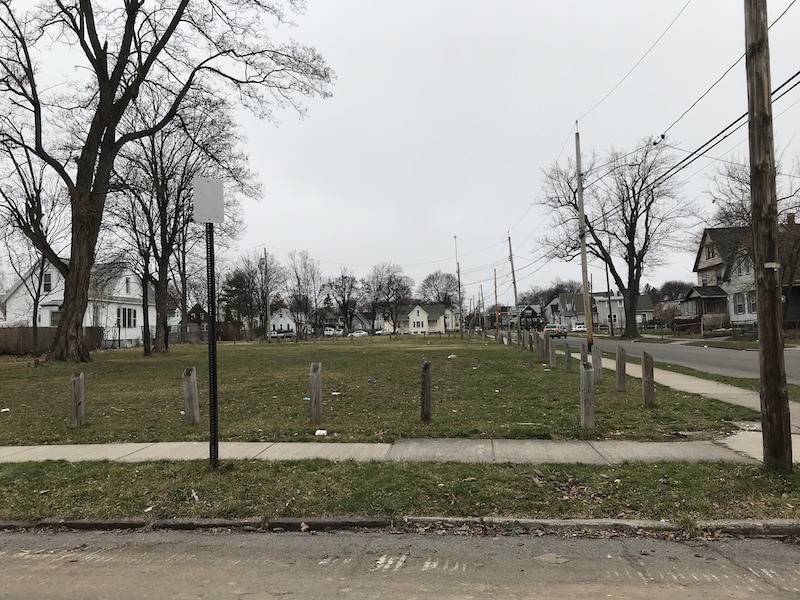
Yes, this neighborhood has a ton of history, and yes it’s a cultural goldmine that deserves recognition. Let’s also recognize that this neighborhood has some serious problems. One of the biggest obstacles to building La Marketa were the open-air heroin sales going on around the Clifford & Clinton intersection. There were a fair amount of fire-damaged homes that I passed, and blocks of homes that had been torn down over the years. And mere hours after I returned from one of my rides near El Camino a body was found at the trail head. If any neighborhood needs some love it’s this one. In my research I kept on finding a turning point when the residents gave up and moved away: the racial protests of 1964, centered only a few blocks south of here, made more than a few old timers say “enough is enough”. But in reality, the unrest was partly the result of the city giving up on that neighborhood years prior. The writing was on the wall.

I also saw signs of progress. There was significant construction happening around Sullivan and Hoeltzer Streets near La Marketa. I’m encouraged by the good things that happen here: the art, new homes, amazing restaurants, community gardens, and the people. I had more than one good conversation with a staff person at the Ave D Rec Center who was very curious about my travels through the neighborhood. She mentioned there’s still a lot of love for the neighborhood, at least from the people that live there. We shouldn’t forget that it’s still the “forever immigrant neighborhood” and immigrants keep our city vibrant. For me, it’s another neighborhood with family history, so I know I’ll be back to trace some of my own roots, and probably get some Puerto Rican food for lunch while I’m at it.


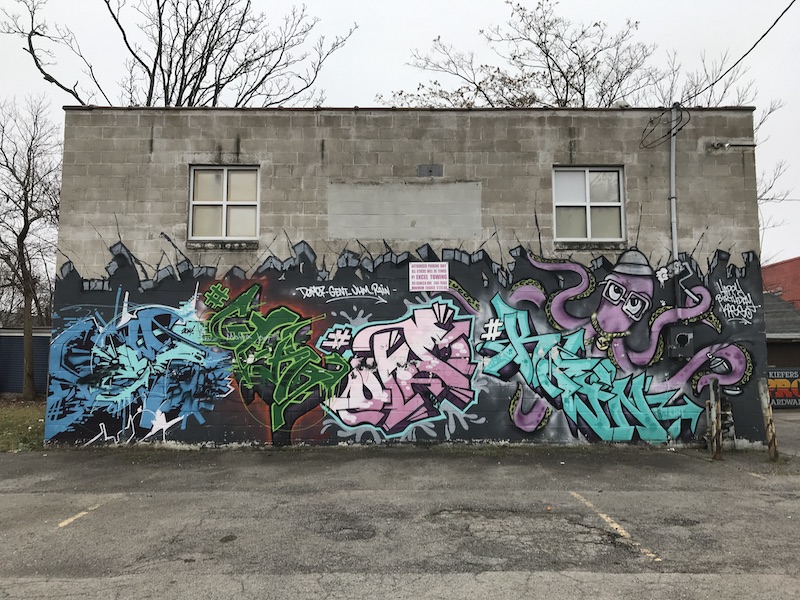
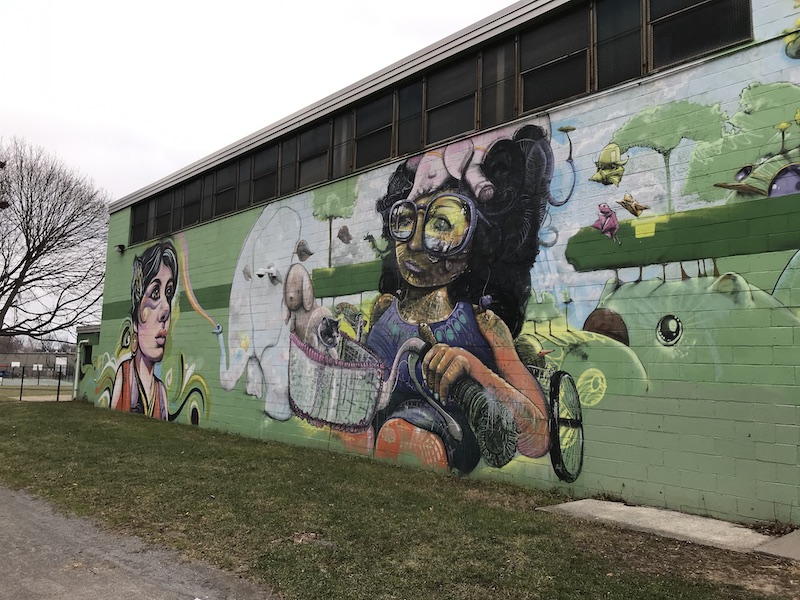

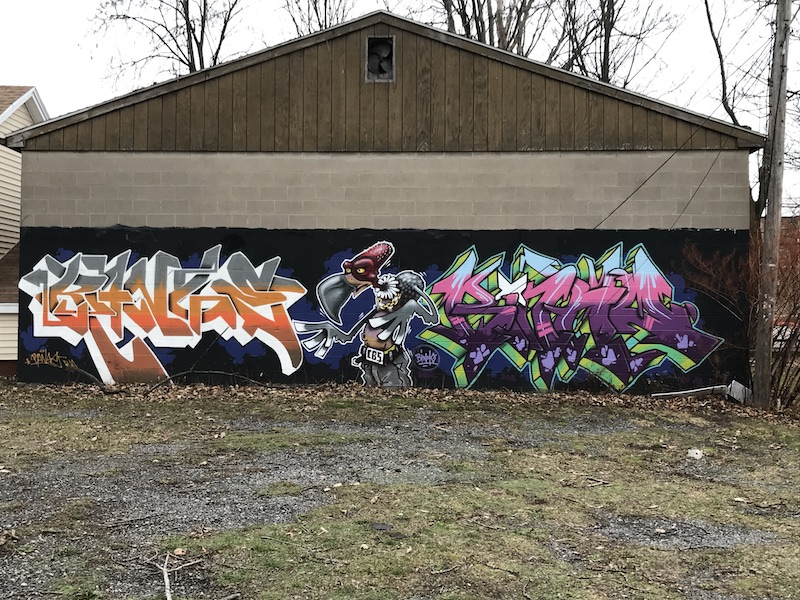

As a boy I grew up on Clifford, went to #8 school and then Edison when it was on Clifford and then Franklin. Went to church and religious instructions at St. Michael’s, delivered newspapers for the Rochester Abendpost, Rochester’s German Newspaper set pins at the Double E bowling alley, and hung around Ave. D playground walking the old R.R. tracks. This article brought back many childhood memories. Thanks again for another fine piece of work about Rochester’s neighborhoods.
Wonderful article Jay! Going to share it & tag some friends!